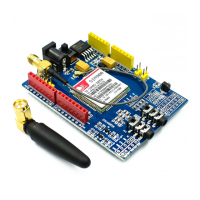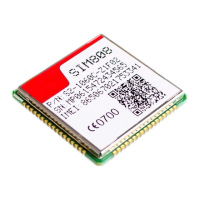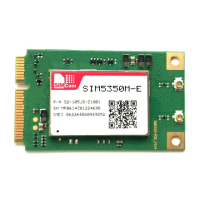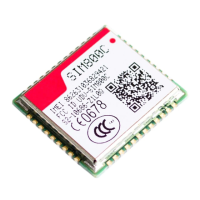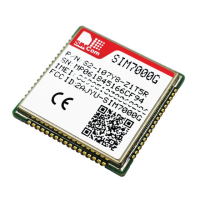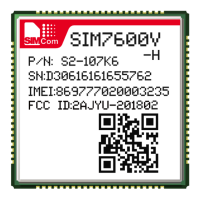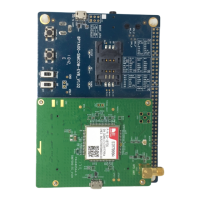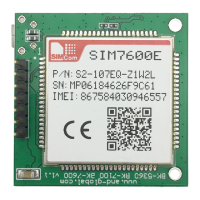SIM900 Hardware Design
z DBG_TXD: Send data to the RXD signal line of the DTE
z DBG_RXD: Receive data from the TXD signal line of the DTE
The logic levels are described in following table.
Table
8: Logic levels of the serial port and debug port
Parameter Min Max Unit
V
IL
0 0.15*VDD_EXT V
V
IH
0.85 *VDD_EXT VDD_EXT V
V
OL
0 0.1 V
V
OH
VDD_EXT -0.1 VDD_EXT V
TXD
RXD
RTS
CTS
DTR
DCD
RI
TXD
RXD
RTS
CTS
DTR
DCD
RING
MODULE (DCE)
CUSTOMER (DTE)
Serial port1Serial port
Debug port
Serial port2
DSR DSR
DBG_RX
DBG_TX
TXD
RXD
Figure 20: Connection
of the serial interfaces
3.8.1 Function of serial port & debug port supporting
Serial port
z Modem device.
z Contains data lines TXD and RXD, State lines RTS and CTS, Control lines DTR, DCD, DSR and RI.
z Serial port can be used for CSD FAX, GPRS service and send AT command of controlling module. Also
serial port can be used for multiplexing function. SIM900 supports only basic mode of multiplexing so far.
z Serial port supports the communication rates as following:
1200, 2400, 4800, 9600, 19200, 38400, 57600 and 115200bps.
z Autobauding supports baud rates as following:
1200, 2400, 4800, 9600, 19200, 38400 and 57600bps, the default setting is autobauding.
Autobauding allows the GSM engine to automatically detect the baud rate configured in the host application. The
SIM900_HD_V1.05 06.23.2010
33
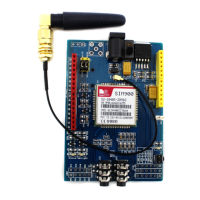
